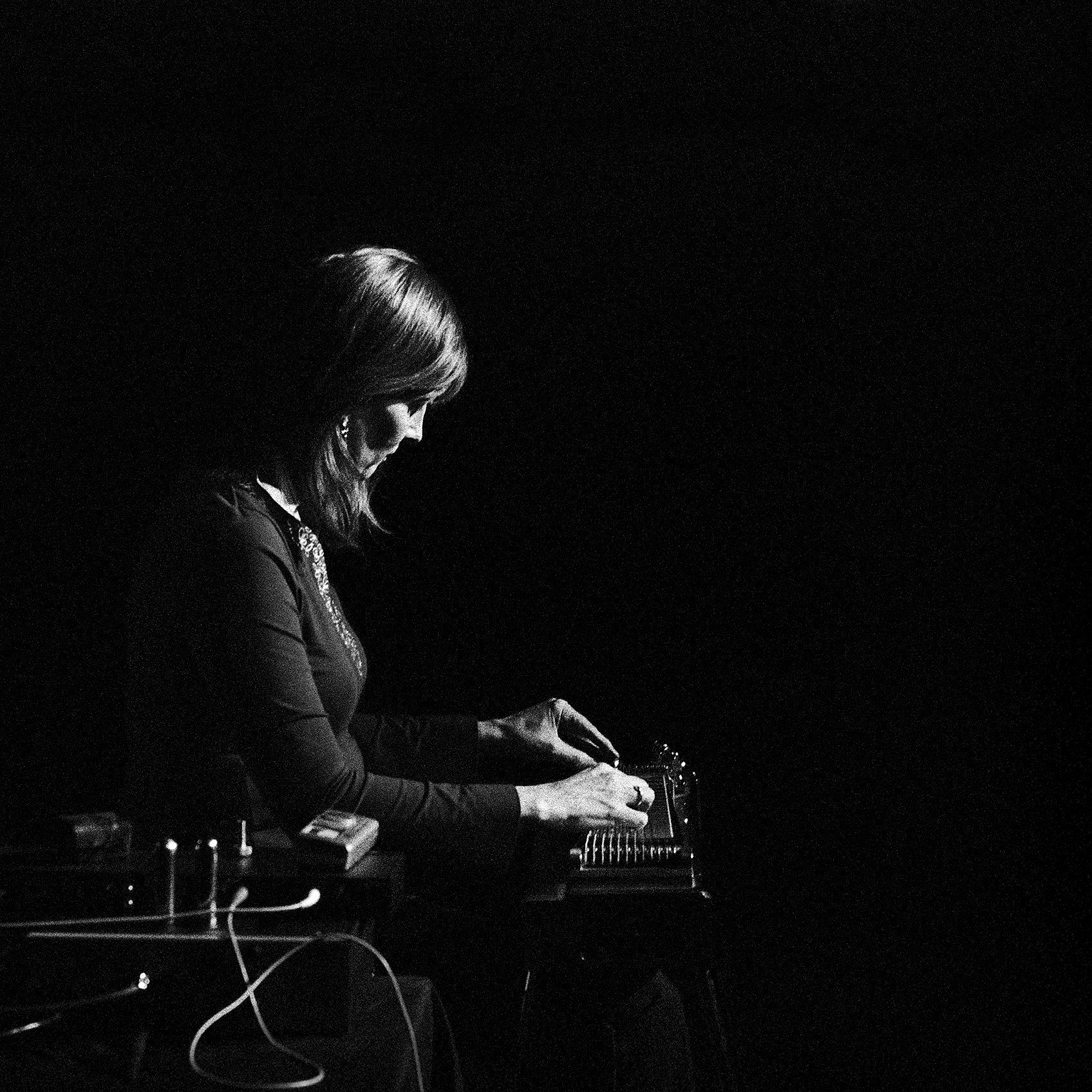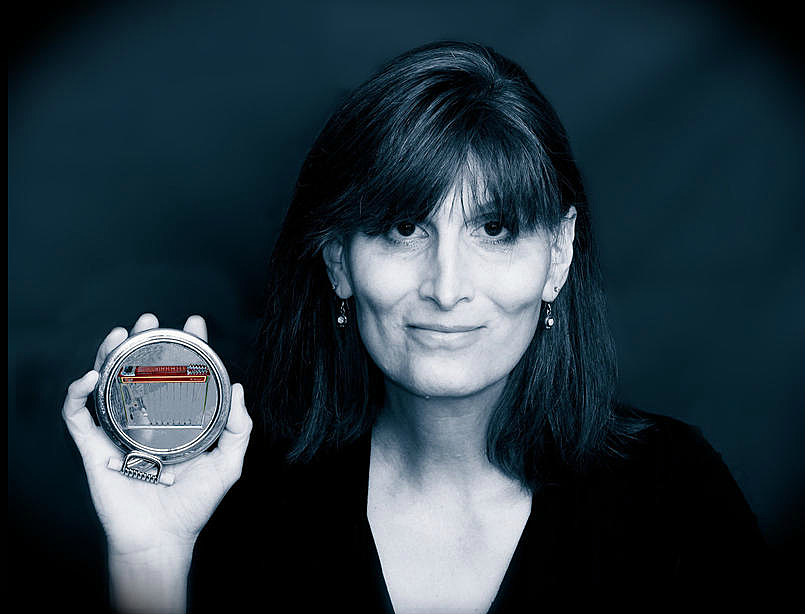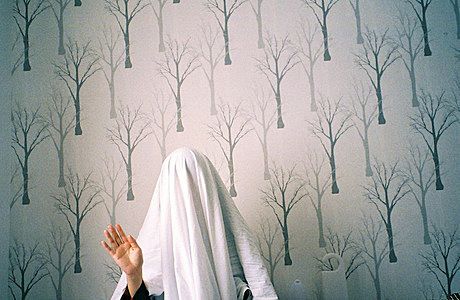Our Lady of the Perpetually Moving Pedals: An Interview with Susan Alcorn
Hermione Johnson talks to Susan Alcorn ahead of her NZ tour
Susan Alcorn is no ordinary pedal steel guitarist. Self-taught and experimental, her music pushes through the bounds of conventional Americana to a realm all of its own - one which has won her accolades, as well as death threats.
She grew up on Muddy Waters and classical, cut her teeth on stage playing pop music and country and western, before venturing into the worlds of chromaticism and minimalism; Xenakis and Stockhausen, pedal steel at her lap. Mostly self-taught, she’s since extended the instrument’s range and repertoire to include her own polyphonic transcriptions of Messiaen and Piazzolla (her latest album Soledad is a collection of her own re-workings of the latter’s tango music).
Listening to Susan, you can hear Hawaii, you can smell Texas, but it’s more of a memory of those places, or a dream. Her music echoes both a singular siren and a cinematic soundscape, birthing bone piercing melodies and pulsing harmonies. Great floods of resonant harmonies create something akin to the biblical harp of King David, if that harp were slowed down many BPM and played from under the sea. I caught up with her just prior to her trip to New Zealand.
HJ: Where did you grow up? Was there a lot of music in your community?
SA: I grew up in a lot of places in the eastern half of the United States. My father was a salesman, so we followed his work. I was born in Cleveland, Ohio; but as a child I also lived in Allentown, Pennsylvania; Orlando, Florida; and Chicago, Illinois. In Cleveland, I remember they took our elementary school to a symphony performance each year, and that was the highlight of the year as I remember it. I loved hearing all those instruments live in the concert hall.
Susan Alcorn, “Crepuscular Dreams”, 2015.
In Allentown, when I was about eight or nine years old, I first took up an instrument and practiced it seriously - I played the viola, and, later, the cornet. I used to listen to pop music from radio stations in New York City - the Beatles, the Rolling Stones, Petula Clark, the rhythm and blues girl groups, Roy Orbison, the Everly Brothers, music like that. When my family moved to Orlando, Florida, I was entering my teenage years, and my world was starting to get a little bigger. I stopped playing the trumpet (much to the consternation of my parents and my music teacher who said I should play both so that I’d only be half a failure - funny thing how certain words spoken so casually by someone stay in your mind for so many years). I went to the rock ‘n roll shows that came through Orlando and saw many of the big rock groups of the late sixties. I also became fascinated with the blues. It was at that time I began playing actual gigs - dances and a few nightclubs (I was under-age at the time). In Chicago I became immersed in the blues. Once I went to a small club where blues musician Muddy Waters and his band were performing. I remember how he played his slide guitar and how there was so much emotion and so much raw power all in the space of one single note, and in a way, that changed my life. I began playing bottle-neck guitar, then Hawaiian guitar, then dobro, then finally the pedal steel guitar. I guess Muddy Waters was my gateway drug.
HJ: What are your early musical memories?
SA: My parents were avid music listeners, and my mother played the piano and sang, at one time, with the Cleveland Symphony Orchestra under the legendary George Szell. There was lots of music around the house when I was growing up: Beethoven or Brahms, Ella Fitzgerald or Glenn Miller. One of the first pieces of music that I remember truly catching my ear was Rimsky-Korsakov’s “Pictures at an Exhibition”. From an early age I formed a deep connection with sound, with notes, melodies, and timbres.
HJ: When did you start learning the pedal steel guitar and what was the process like? Did you have a teacher?
SA: I started learning the pedal steel guitar when I was twenty years old, and it was difficult because where I lived at the time, there were no teachers, so for the most part, I was self taught. I spent hours and hours every day and night with the record player trying to copy the music of the pedal steel guitarists I admired, lifting up the needle, setting it back down, and hoping that it would be in the right place. This was, of course, before YouTube and digital music. Years later, when I moved to Houston, Texas, I took a few lessons from Maurice Anderson, the legendary jazz pedal steel player. He remained my mentor for the rest of his life.
HJ: When did you break out into improvising? Was there a catalyst?
SA: In music, I think I had always heard things a little differently from anyone I knew. It was the unusual music, the strange and unusual melodies, timbres, notes, and sounds that attracted me. At a very early age I was exposed to some of the more adventurous 20th century classical music, John Coltrane, psychedelic music, and then artists like Ornette Coleman and Henry Threadgill. I had also spent some time with Pauline Oliveros and her deep listening music (my two daughters took piano lessons with Pauline’s mother, Edith Gutierrez), and was beginning to think of music in a more holistic way.
The catalyst for free improvisation came in the late 1990’s when I was asked to play in an event called “12 Minutes Max” at an art space in Houston. For that program, you could do anything you wanted, but it could not last more than twelve minutes. I thought it fruitless to put together a band to play this, so I thought, why don’t I just go out with nothing prepared, with my head totally blank, get a feel for the space and for the people in the space, and start playing. It was like playing naked, no place to hide - no other musicians, no music, chord progressions, harmonies, etc. And that was when I realized that this is what I wanted to do.
Susan Alcorn, Three Waters
HJ: I read that your innovations were once received rather negatively by some more traditionalist pedal steel guitar fans.
SA: I was once called the "Empress With No Clothes"(because they thought I was just playing sounds with no musicality or instrumental technique) and also compared to Hitler (for whatever reason escapes me). I don’t get that so much anymore. I think some of them have discovered that I’m not a complete ignoramus on my instrument, but I think most of the traditional steel guitar fans don’t care for what I do, so they pretty much just ignore me, which is not a bad thing. Everyone has their own likes and dislikes, and tradition is important. Music needs people who look back and who perfect a certain style and carry it on. But music also needs people who are going to do something different, explore new directions. Everyone is different and has a different affinity. Some people have to just do their own thing no matter what the rest of the world thinks. Without these people, music will stultify and lose its magic.
HJ: What's it like playing experimental music in the US?
SA: That's a big question. Physically, the United States is a large country, and though things are changing, the centers of experimental music have historically been in large cities such as New York in the east, Chicago in the Midwest, and Los Angeles and the Bay Area of California in the west. Geographically the distance between those places used to be pretty prohibitive as far as musical interaction is concerned. Before the internet, there were different styles of music in all genres and lots of different flavors coming from the different regions. Sometimes I worry that we are losing all the wonderful variation of flavors in music in the US, and at other times I think that these flavors will thrive and grow in ways I can't foresee, through the imagination, efforts, and talents of a new generation.
As far as opportunity goes, there are a lot of musicians everywhere in the US, as there are in New Zealand, and for certain people, lots of opportunities to perform creative and improvised music, especially if you don’t mind playing for free or for very little money. But there are some people who do well.
HJ: On your tour of New Zealand you'll be playing with a number of local musicians who you've never met. How do you approach spontaneous music making?
SA: In my experience of free improvisation it’s not uncommon to play with people you’ve never met, and that is part of the beauty of it - two human beings meeting through sound, notes, music and a wordless communion; summoning (hopefully) something beautiful, and somehow meaningful from the ether.
Approaching spontaneous music making is a little hard to put into words, and sometimes I think the mere process of describing something like this somehow lessens it (so, Mr. Bach, what exactly were you trying to say in the Goldberg Variations?). I try to approach each improvisation with an openness of mind, an intention to listen and respect the music, and an understanding that when you are playing for an audience that you need to respect them and hope to give them something worthy of the time they spent listening to you.
HJ: On your website there's a beautiful photo of you holding up what looks like a medal. Is it a medal - if so, what did you get it for?
That beautiful medal is the Honorary Award from the Order of Benevolent Sisters of the Steel Guitar Bon Secours from which I was given the title ‘Lady Susan of the Perpetually Moving Pedals’. I, of course, wear it around my neck whenever I attend state functions in an official capacity. The real story is that when my husband David was about to take the photo, I picked up a small hand mirror and held it up. My original intention was to have a yin-yang symbol photoshopped onto the mirror like Frida Kahlo in Diego Rivera's "Sunday Afternoon in Alameda Park" (I would have loved the skeleton too, and the little boy Diego), but that didn't work, so he photoshopped a photo of one of my pedal steel guitars onto it.
Altmusic Presents
Susan Alcorn
Thursday 12 November – Lyttleton Coffee Company, Lyttelton, with Reuben Derrick and Daniel Beban (Orchestra of Spheres)
(free bus from The Auricle, New Regent St. 7.30pm)
Friday 13 November – The Anteroom, Port Chalmers – with Alastair Galbraith (free bus from Countdown Dunedin 7.30pm)
Saturday 14 November – The Sherwood, Queenstown
Wednesday 18 November – Meow, Wellington, with Tom Callwood (The Phoenix Foundation), Tristan Carter (The Troubles) and Nell Thomas (Orchestra of Spheres).
Friday 20 November – Audio Foundation, Auckland, with Hermione Johnson and Anthony Donaldson
Saturday 21 November – Audio Foundation, Auckland, with Greg Malcolm and Anthony Donaldson
Altmusic is a touring programme run by the Audio Foundation which brings some of the most world’s most adventurous and innovative musicians to New Zealand. Previous Altmusic artists have included Merzbow, Matmos and Richard Dawson.


